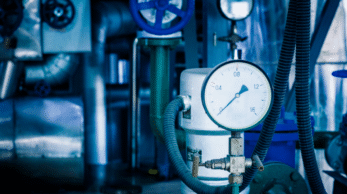During maintenance interventions, quality depends as much on precision as on choosing the right equipment. To remain competitive, manufacturers must make decisions suited to their on-site reality and, to do so, have the right data. Traceability and mobility are the main levers: the company thus accesses up-to-date maintenance information and adjusts its operations as needed.
Why has traceability become a regulatory and quality requirement?
Having become a priority for manufacturers, the traceability of maintenance operations meets a strict regulatory framework (ISO standards, quality audits, industry certifications), and also growing customer expectations. Professionals must be able to demonstrate checks, repairs or replacements of assets by an authorized technician.
In sectors such as food, energy, pharmaceuticals or aerospace, the ability to justify maintenance actions is particularly important. It is essential during an audit and, at the time of intervention, enables the right operational decisions to be made. Maintenance and its monitoring must therefore be considered in detail, with constant data collection in the field.
Field mobility, a performance lever for teams
In a context where maintenance is often decentralized, mobility is the second priority factor for manufacturers. Technicians who can access all useful information (intervention histories, plans, procedures, available parts) from the intervention site are better equipped to complete their tasks quickly.
To maximize this access to data, industry increasingly uses technologies such as barcodes, QR codes or RFID tags. Usable on the move, these devices notably allow to :
- Identify the asset and view its history
- Create or update a work request
- Record time spent, parts used, and actions taken
- Attach photos, comments, or readings
- Close the work order directly on site
The primary aim of these technologies is to reduce input errors, streamline information transfer and improve technicians’ productivity while easing administrative tasks.
Another major advantage of mobility is the responsiveness of field operators. Immediate knowledge of on-site needs allows each manufacturer to plan interventions according to urgency or resource availability. The technician, for their part, will have an up-to-date schedule and a clear view of priorities. Armed with the right information, they will make the right choices to ensure the performance and longevity of the asset.
How to improve efficiency in the field?
The combination of traceability and mobility offers a real performance leap for maintenance teams. Bringing both aspects together, the CMMS acts as an assistant to operators, but also to manager thanks to:
- Real-time tracking of interventions with comprehensive data collection
- Better stock management and parts consumption tracking for each operation.
- Work orders enriched automatically
- Immediate insight into assets (KPIs, availability rates, operating costs…).
- Improved coordination between technicians, maintenance managers and cross-functional services (procurement, production, quality).
In the field, the CMMS means fewer back-and-forths and continuous data flow that reduce downtime.
Finally, beyond performance before and during interventions, the CMMS makes traceability a lever for continuous improvement. The data collected in the field will then be used to identify the causes of recurring failures and, ultimately, to strengthen the maintainability of assets in each manufacturer’s specific environment.
DimoMaint MX & TIMCOD: complete mobile traceability
The maintenance software DimoMaint MX addresses all traceability and mobility needs of manufacturers. To this end, the tool, through its mobile application designed for the real needs of technicians, enables you to:
- Create, schedule, and manage work orders directly in the field,
- Scan assets using barcodes or RFID tags with dynamic display
- Access histories, technical documents, and asset schematics
- Record in real time times, parts used, photos, readings and comments
- Synchronize all data with the central platform.
Partner of DIMO Software, TIMCOD, a specialist in traceability and connected assets, puts its technology at the service of maintenance. The integration of the CMMS with RFID readers, portable printers or rugged terminals ensures detailed maintenance information, particularly useful in constrained environments.
Immediately operational, DimoMaint MX enables continuous data flow between maintenance stakeholders and a continuous traceability chain for professionals across all sectors.





